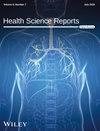Perturbation of Circulating Inflammatory Proteins Mediates the Relationship Between Cholecystectomy and Nonalcoholic Fatty Liver Disease: A Multivariate and Mediation Mendelian Randomization Study
Abstract
Background and Aims
Observational studies suggest a link between cholecystectomy and nonalcoholic fatty liver disease (NAFLD), but whether cholecystectomy is an independent causal risk factor and the underlying mechanisms remain unclear. Inflammation, a key driver of NAFLD, is a potential mediator of this association. The aims of this study are to determine the independent causal effect of cholecystectomy on NAFLD and to quantify the mediating effect of inflammatory factors in the causal pathway of cholecystectomy and NAFLD.
Methods
We employed a comprehensive Mendelian randomization (MR) framework. Multivariable MR (MVMR) assessed the independent causal effect of cholecystectomy on NAFLD after adjusting for eight common NAFLD risk factors (five lipid levels, body mass index, type 2 diabetes, and hypertension). Second, mediation MR evaluated the potential mediating role of 91 circulating inflammatory proteins in the cholecystectomy–NAFLD pathway. Genetic instruments were derived from European-ancestry genome-wide association studies (GWAS). Sensitivity analyses assessed pleiotropy, heterogeneity, and robustness.
Results
Cholecystectomy demonstrated a significant independent causal effect on increased NAFLD risk after adjustment for confounders (OR = 12.988, 95% CI = 1.998–84.420, p = 0.007). Among 91 inflammatory proteins, tumor necrosis factor receptor superfamily member 9 (TNFRSF9) mediated 10.76% of the increased risk of NAFLD associated with cholecystectomy (Mediator effect β = 0.522, 95% CI = 0.124–0.919, p = 0.01).
Conclusion
Cholecystectomy is an independent risk factor for NAFLD. Circulating TNFRSF9 as a key inflammatory mediator explains ~10.76% of the increased NAFLD risk following cholecystectomy. These findings highlight TNFRSF9 as a potential biomarker and therapeutic target for preventing postcholecystectomy NAFLD, although further validation is required.


 求助内容:
求助内容: 应助结果提醒方式:
应助结果提醒方式:


